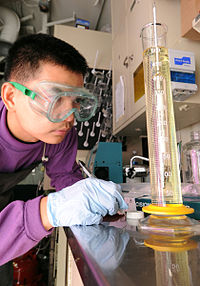
Photo from wikipedia
Abstract Epidemiological studies suggest that the protective effects of fruits against chronic diseases may vary according to their extent of processing. We therefore reviewed what the scientific literature states about… Click to show full abstract
Abstract Epidemiological studies suggest that the protective effects of fruits against chronic diseases may vary according to their extent of processing. We therefore reviewed what the scientific literature states about the potential mechanisms underlying this “processing” effect by focusing on the most significant nutritional properties, namely, the nutritional density of bioactive compounds, the digestive bio-accessibility of nutrients, and the antioxidant, satietogenic, alkalizing and glycemic potentials. When possible, we have ranked fruits according to the international NOVA classification as un-/minimally processed, processed (mainly with added sugars), and ultra-processed fruits. Our literature review confirms that the more fruits are processed, the lower are their alkalizing, antioxidant and satietogenic potentials. For the glycemic index, the results are more difficult to interpret because fruits are a significant source of fructose with a very low glycemic index that “distorts” the “processing” effect. However, fruits in sirup tend to have a higher glycemic index, probably because of the highly bioavailable added sugars. Overall, the destructuration of the fruit fibrous matrix by thermal and mechanical treatments, combined with the addition of simple sugars, constitute the treatments that most degrade the fruit nutritive quality by diluting the nutritional density and attenuating the “matrix” effect. The new technological processes described as “nonthermal” (e.g., pulsed electric fields, high pressures, supercritical CO2, radiation, etc.) seem promising as they limit vitamin C and antioxidant phytonutrient losses in fruit while allowing satisfactory storage time. To preserve fruit longer, drying appears to be an interesting alternative to maintain the health potential of fruit, although it causes antioxidant losses. Finally, although “5 fruits and vegetables a day” is a well-known nutritional recommendation, in view of the results reviewed here, it would be relevant to be precise and include “preferably minimally processed”.
Journal Title: Critical Reviews in Food Science and Nutrition
Year Published: 2019
Link to full text (if available)
Share on Social Media: Sign Up to like & get
recommendations!